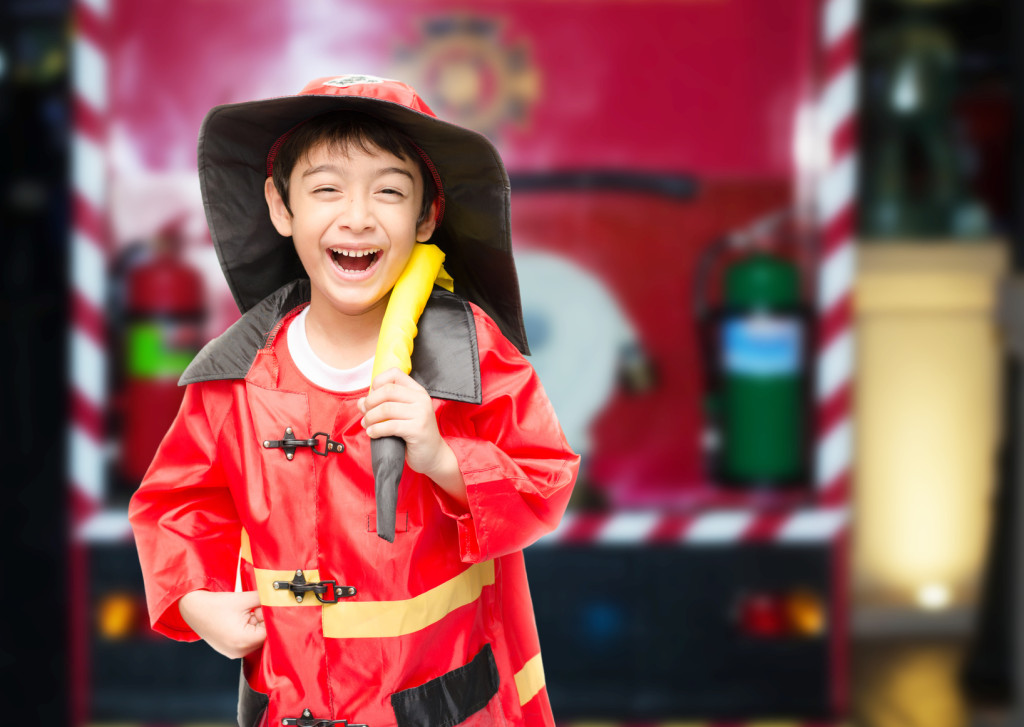People often underestimate the importance of fire safety until it’s too late. Fire spreads rapidly, and depending on a variety of conditions, smoke can fill up a room in just one minute. Here’s what you need to do today to keep your family safe from a devastating fire:
1. Smoke alarm maintenance
You can never have too many fire alarms, but guidelines suggest they should be placed:
- Outside each bedroom
- Near furnaces
- Every level of your home
- The basement
- In mobile homes, affix them to each end
You should never paint over a smoke alarm, and it should be cleaned every month to prevent accumulation of dust, and replaced every 10 years. If there are any members of the household that are hearing impaired, fire alarms should be equipped with a flashing light.
2. Plan an escape route
Instruct children aged three and up on what to do in case of a fire. Plan an escape room and ensure that there are always two ways out. Ensure that doors and windows can be easily opened by every member of the family. Make sure kids know not to use an elevator. Choose a safe meeting place for everyone to gather once they’ve all gotten out, like a recognizable tree. Practice your family’s escape route to alleviate children’s fears if the idea of fire is causing them anxiety. Although the whole family should participate in the fire safety plan, adults should always plan to rescue children under 5 years of age, as they may be too young to reliably follow an escape plan.
3. Teach children about 911
Make sure kids know how to dial 911 and what it means to make an emergency call. Fire departments offer demonstrations for your kids to be exposed to what a firefighter looks like suited up, and how important their job is.
4. Involve babysitters and other caretakers
If your children spend extended periods of time with nannies or other caretakers, they should be involved in the fire escape plan. It can be helpful to run through it with them once, as they might not be as familiar with your home as you are.
5. Limit fire hazards in the home
Candles, unattended cooking and multiplug adapters are often known to cause fires in homes. Especially around children and pets, seek out flameless candles that still emit a pleasant smell in the home. To prevent electrical fires, instead of using multiplug adapters or extension cords, purchase power strips with a reset button. Always be cognizant of the placement of towels near stoves as well as unattended cooking. Never walk away from an oven or stove that is turned on.
6. Know RACE and PASS
RACE and PASS are acronyms that can help remind you and your family what to do during a fire.
RACE stands for:
- Rescue
- Alarm
- Confine
- Extinguish or Evacuate
PASS is used to remember how to handle fire extinguishers:
- Pin- remove the pin
- Aim- aim at the base of the fire
- Squeeze- squeeze the handle to discharge the extinguishing agent
- Spray- use a back and forth motion to cover the entirety of the flame.
Preventative measures are key, but if a fire does occur, here’s what you should do:
1. Test door knobs with the back of your hand
Testing the temperature of a door handle can signal whether or not fire is on the other side of the door. Remember to close doors behind you to help contain the flow of oxygen throughout the house.
2. Stay low to the ground
Smoke rises before it fills a room, so as you evacuate, crawl out of the house to limit the amount of smoke that gets into your lungs.
3. Evacuate immediately
If there are prized possessions or pets left behind, firefighters have the best chance of retrieving them for you. Your first priority should be evacuating, as everything else can be replaced.
4. Stop, drop, and roll
This is especially important to teach kids. If their clothing catches on fire, it is a natural reaction to run. After stop, drop, and roll, teach them to cool burned areas with water and then call for help.


